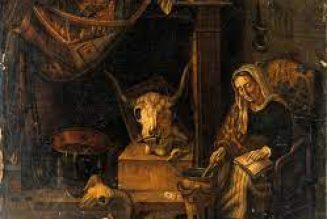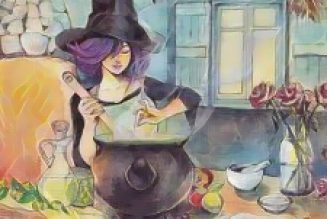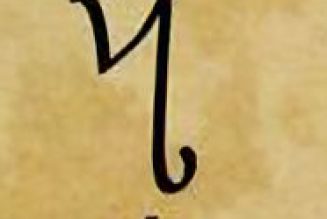Contemporary witches and Pagans view healing as one of their most important functions.
They use a wide range of healing techniques, including magic; herbal and folk remedies; bodywork, and energy work;
Native American Indian and shamanic techniques; and Western approaches to medicine and psychology.
Some Witches are professional healers, trained in Eastern and/or Western medicine and psychology.
Witches prefer holistic and natural healing methods that involve the healing power of sound, breath,
color, touch, and movement.
Prior to the scientific age, healing commonly was the province of the village wise woman, cunning man, witch, or wizard.
Such individuals often were born with the mysterious gift of healing by touch, and many were steeped in herbal lore that had been passed down through generations of their families.
Still others said they received their healing ability from fairies.
Folk healers diagnosed both human and animal ailments.
Some were renowned for determining whether or not haunting fairies or ghosts were responsible for illness and then driving them away.
One common remedy for fairy-caused illness was the recitation of Christian prayers followed by a measurement of the patient’s girdle to see if the fairy had departed the body.
Other healers diagnosed the patient’s urine.
Healers dispensed herbal remedies in the form of powders, potions, and unguents.
They prescribed charms, little prayers comprised of both pagan and Christian elements.
They also cast spells.
Some folk-magic remedies required procedures on the part of the patient, such as boiling an egg and burying it in an anthill; the disease or condition would disappear when ants had consumed the egg.
Healers also made use of gems and semiprecious stones, which have a long history as medicinal objects.
The greatest natural healing knowledge comes from herbalism, the earliest of all healing systems and one used throughout the world.
In Western culture, herbalism had been developed to a high art by the ancient Egyptians, Sumerians, Assyrians, Babylonians, Greeks and Romans.
Herbal sorcery was renowned in ancient Greece.
The greatest collection of ancient plant lore was compiled by Pliny in Natural History, a 37-volume work that contains a wealth of information about the medicinal uses of plants, flowers, trees and herbs.
For centuries, others built upon Pliny’s work, most notably Hildegard of Bingen, a medieval German mystic and abbess, and Nicholas Culpeper, a 17th-century English physician and astrologer who linked herbs to astrological signs.
Plants acquired numerous pagan religious associations, which the Christian Church replaced with Christian associations.
Hypericum perforatum, for example, blooms during the summer solstice and was an ancient totem of sun worship.
The Romans burned it in bonfires in observance of the solstice, which occurs around June 21.
The Christian Church associated it with the birth of John the Baptist on June 24, and the plant became known as St. John’s wort.
Cunning folk, witches, and healers often observed both pagan and Christian associations in their charms and recipes.
The church attempted to discredit village healers, for their cures competed with the church, which claimed a monopoly on miracles.
Healing by sorcery was considered fraudulent.
There were many such cases of fraud which was a civil crime under Roman law.
The laws were not strictly enforced, however, for the populace was reluctant to give up local healers.
During the witchhunts, healing by sorcery was considered “white” witchcraft until demonologists began denouncing it as evil.
Increase Mather stated that the healing power in a witch was a diabolical gift, not a divine gift from God.
Many contemporary Witches become skilled in the use of herbs to maintain health as well as to cure illness.
Some grow and harvest their own herbs, which they use to make salves, syrups, teas, poultices, and powders.
Herbs also are used in magical healing.
For example, a cloth doll called a poppet is made to represent the patient and is stuffed with the appropriate herbal remedy.
The poppet is used in the casting of a sympathetic magic spell for healing.
The ability to heal by a laying on of hands, like healing with herbs, has ancient origins.
Prehistoric cave paintings in the Pyrenees indicate that they may have been used as early as fifteen thousand years ago.
Healing by touch has a written history dating back about five thousand years.
it was used in ancient India, China, Tibet, Egypt, and Chaldea and appears in both the Old and New Testaments.
Gifted individuals are born with the ability for this kind of healing, though it can be learned.
The Christian Church encouraged such miraculous healing within the confines of religion.
Outside the church, it was regarded as fraudulent sorcery and witchcraft.
The one notable exception, tolerated by the church, was the king’s touch, which began in England in the Middle Ages and was popular in England and France until nearly the end of the 17th century.
The king’s touch was the reputed ability of royalty to heal, especially a type of scrofula called the king’s evil.
The procedure called for the patient to kneel before the monarch, who lightly touched the face and usually invoked the name of God, while a chaplain read from the Gospel of Mark, “They
shall lay hands on the sick and they shall recover.”
The king then hung a gold coin strung on a ribbon around the patient’s neck; the coin was reputed to have great magical powers.
Many contemporary Witches and Pagans are trained in a wide variety of complementary healing modalities involving energy work, body work, shamanic techniques,
physical therapy and spiritual counseling.
Those who practice spellcraft weave magical spells into their healing work as well.








